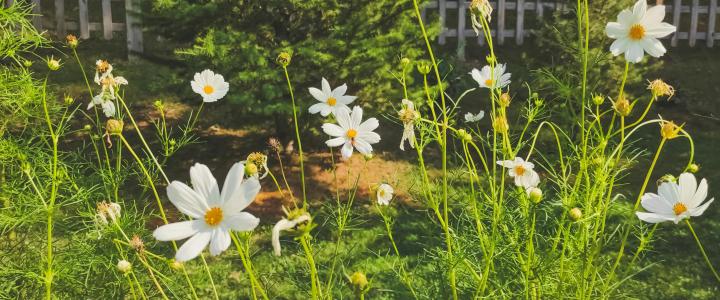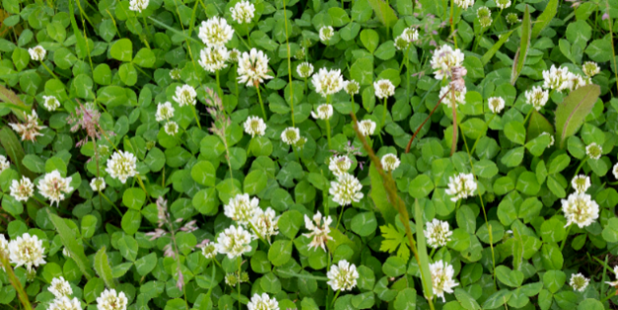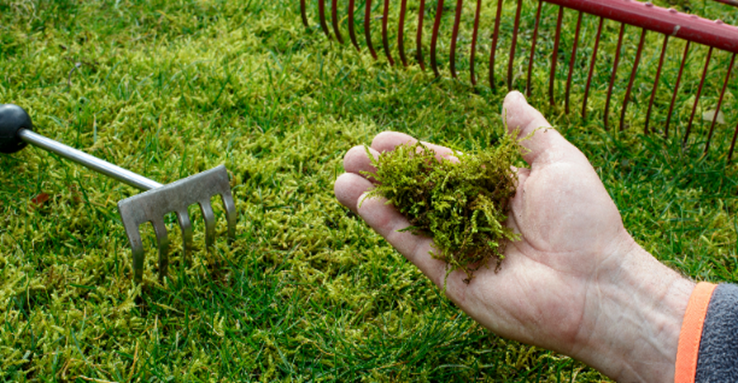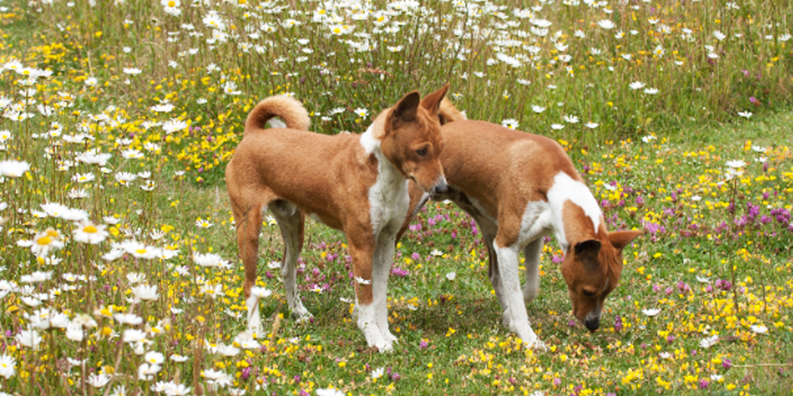
GREENWorks May 2024: Low Mow Spring: Give Your Lawn (And Your Wallet) A Break!
Have you ever heard of the No Mow May movement? No Mow May is a recent annual campaign started by Plantlife. The goal of this campaign is to discourage people from mowing their lawns during early spring, some people simply refer to this as Low Mow Spring. Why pump the brakes on mowing? A key benefit is giving diverse plant species the time to grow in order to sustain native pollinators just emerging from hibernation. Flowers are already scarce during early spring, especially in cities or suburban areas, so waiting to mow your lawn could help bees and other critters get the boost of nutrients they need early in the season. A natural lawn will help support different native species of flowering sprouts, thus helping local pollinator populations.
And, hey, the time you’ll be saving by not mowing will amount to more time available to rest and relax in your yard and garden!
In addition to time, you will also be saving money by not using gas for the lawnmower, not using fertilizers and not watering your lawn as often as usual. Taller grass develops longer and stronger roots, which means less water will evaporate from the ground and the overall drought tolerance of your lawn will increase. The EPA has noted that lawn mowers and other gasoline-powered lawn/garden equipment release harmful and hazardous air pollutants, so taking a break from mowing will also be beneficial toward your health and local air quality.
A Few Alternative Low-Mow Lawn Styles
The No Mow May movement is a great concept for helping local bees, butterflies and other insects, but is there a way to keep this movement throughout the year without sacrificing the look of a beautiful lawn? Well, there are many kinds of alternative lawn styles. Choosing specific plants to implement into your yard could help ease your yardwork load during the warmer months. For example, switching out turfgrass for another type of groundcover will help with less mowing during the year. Also, adding sections of additional biodiversity and flowers into your yard will shrink your lawn size, thus making mowing quicker and less harmful. Plus, an alternative lawn will be popular with bees and other beneficial insects and animals year-round!
White Clover Lawns All-clover lawns, or hybrid grass and clover lawns, are a simple and sustainable option for a low-mow maintenance lawn. Clover is not just a pesky weed; it actually has a lot of lawn potential! This plant manages to remain a vibrant green even throughout the hot summer, and the white clover flowers are a favorite of the bee population. White clover provides a lush green cover for your yard from spring through fall. It is also a natural fertilizer as it creates its own nitrogen supply in the soil that also helps keep your regular grass looking green and fresh. Plus, it’s affordable. Clover seeds are quite inexpensive and will only need to be reseeded every couple of years to keep them looking full and thick.
All-clover lawns, or hybrid grass and clover lawns, are a simple and sustainable option for a low-mow maintenance lawn. Clover is not just a pesky weed; it actually has a lot of lawn potential! This plant manages to remain a vibrant green even throughout the hot summer, and the white clover flowers are a favorite of the bee population. White clover provides a lush green cover for your yard from spring through fall. It is also a natural fertilizer as it creates its own nitrogen supply in the soil that also helps keep your regular grass looking green and fresh. Plus, it’s affordable. Clover seeds are quite inexpensive and will only need to be reseeded every couple of years to keep them looking full and thick.
Moss Lawns Moss is certainly an unconventional lawn alternative, but in shaded and acidic areas of your lawn, consider letting the moss blanket stay! It usually grows where turfgrasses have a weak presence, and its soft texture makes for a comfortable groundcover that requires very little to no maintenance. It is also a great home for pollinating insects to take shelter in. Moss is a unique plant and will require no weeding, fertilizing, mowing or watering from you!
Moss is certainly an unconventional lawn alternative, but in shaded and acidic areas of your lawn, consider letting the moss blanket stay! It usually grows where turfgrasses have a weak presence, and its soft texture makes for a comfortable groundcover that requires very little to no maintenance. It is also a great home for pollinating insects to take shelter in. Moss is a unique plant and will require no weeding, fertilizing, mowing or watering from you!
Meadow Lawns Meadow lawns or “tapestry lawns” are easily the most biodiverse and pollinator-friendly lawn alternative there is! While grasslands are defined as having more than 50% grass cover, meadows contain more than 50% “forb” cover. Forb includes wildflowers and some non-flowering native plants like ferns. Meadows only require mowing a couple of times a year to increase plant diversity and they require significantly less watering than a regular turf lawn. These lawns are visually appealing, cost-effective, low maintenance and great for the environment!
Meadow lawns or “tapestry lawns” are easily the most biodiverse and pollinator-friendly lawn alternative there is! While grasslands are defined as having more than 50% grass cover, meadows contain more than 50% “forb” cover. Forb includes wildflowers and some non-flowering native plants like ferns. Meadows only require mowing a couple of times a year to increase plant diversity and they require significantly less watering than a regular turf lawn. These lawns are visually appealing, cost-effective, low maintenance and great for the environment!
Hybrid Lawns Who said you need to choose just one type of lawn style? Some prefer the traditional look of a turf lawn, which is A-okay. If this is more of your style, consider setting aside just a small section of your yard for wildflower growth, clovers or any kind of garden. Additionally, there are specific no-mow/low-mow grass species that keep the “green blanket” look of a traditional lawn.
Who said you need to choose just one type of lawn style? Some prefer the traditional look of a turf lawn, which is A-okay. If this is more of your style, consider setting aside just a small section of your yard for wildflower growth, clovers or any kind of garden. Additionally, there are specific no-mow/low-mow grass species that keep the “green blanket” look of a traditional lawn.
There are a multitude of benefits in choosing a no-mow/low-mow alternative to traditional turfgrass. Not only will it save you time and money in lawn upkeep, but integrating diverse plants into your yard will make a difference in the overall health of your lawn, while helping local pollinators too.
# # #




